
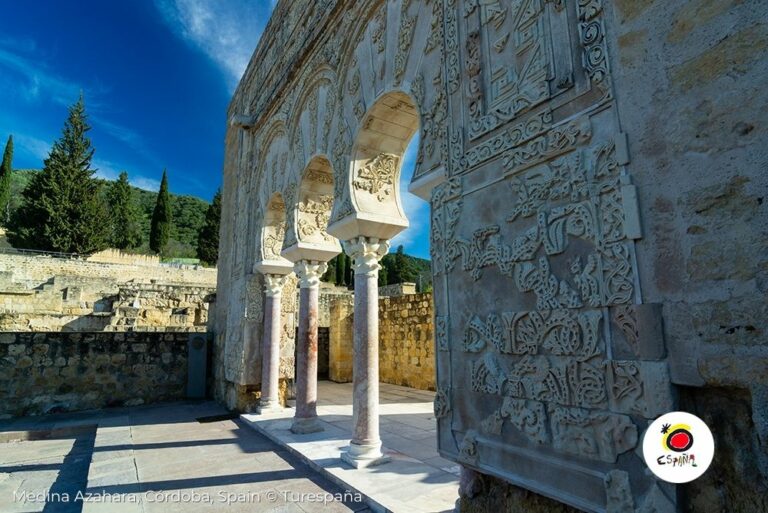

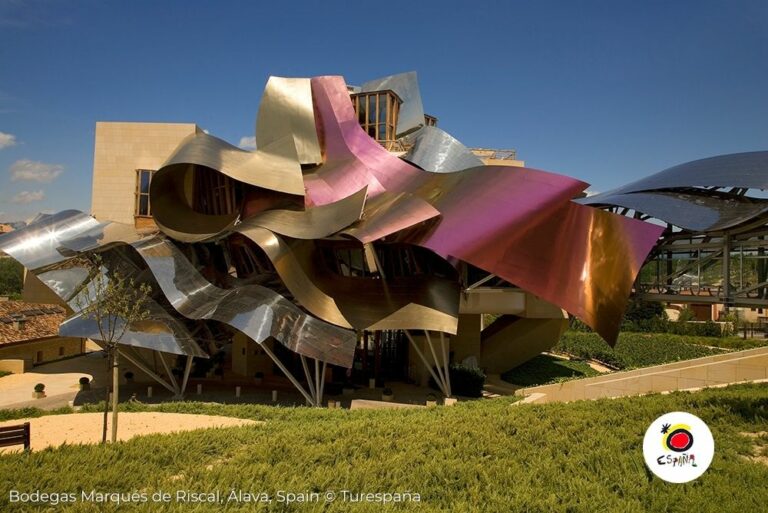


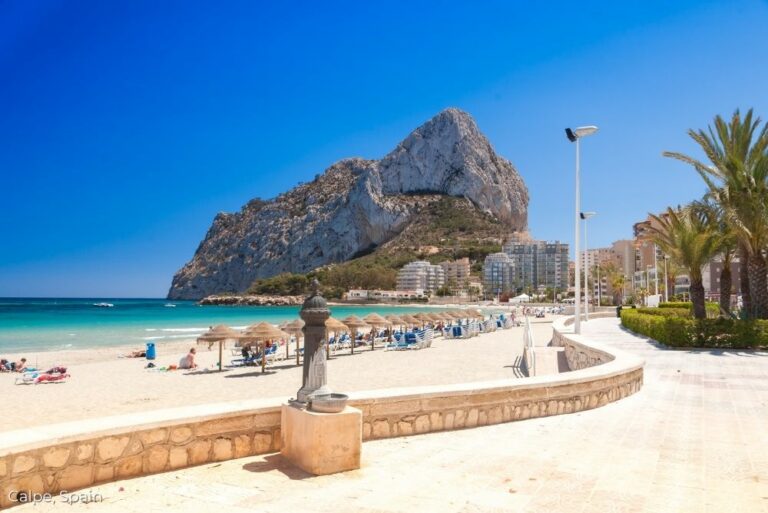
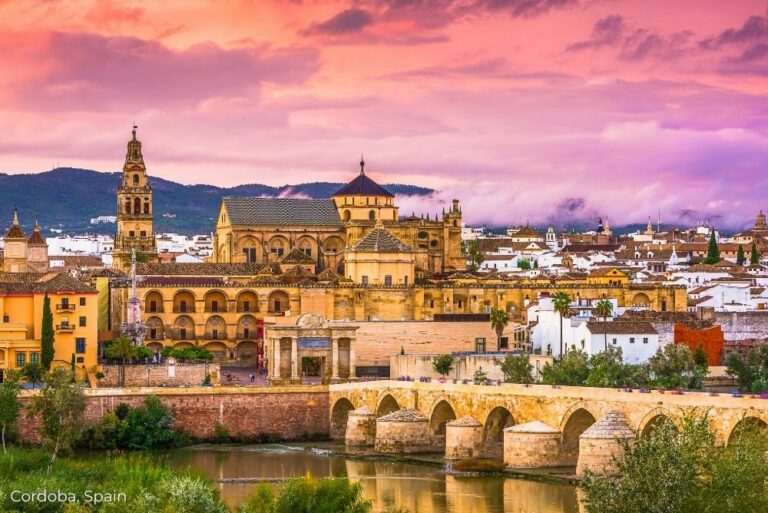
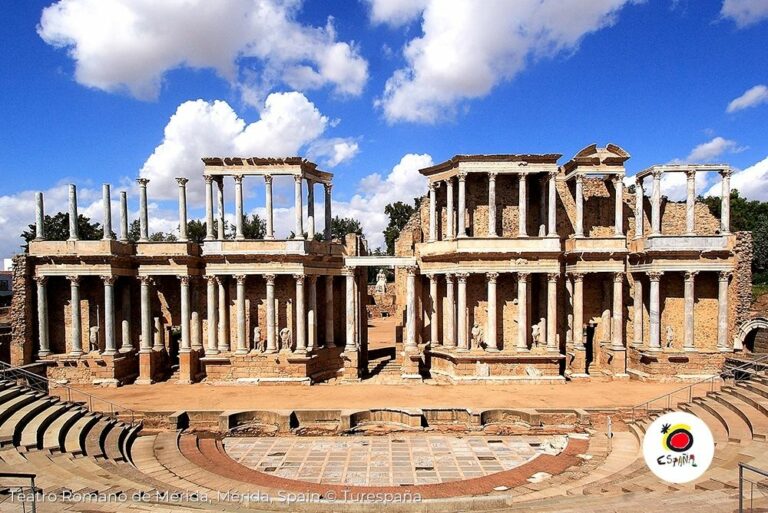
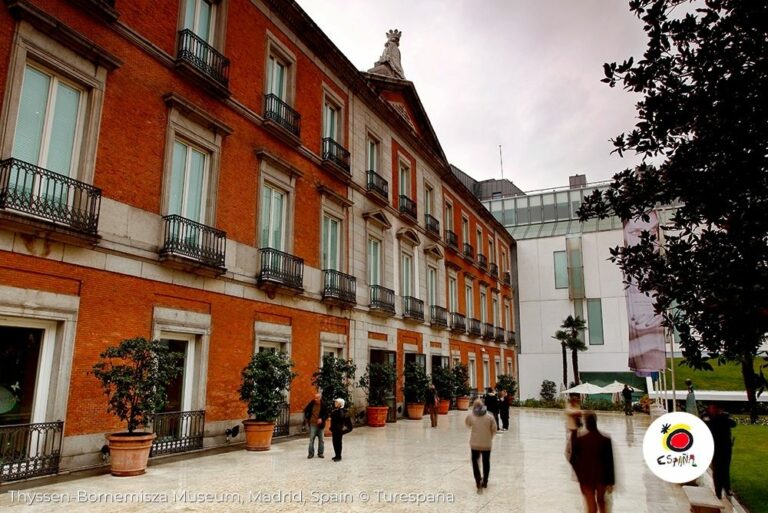

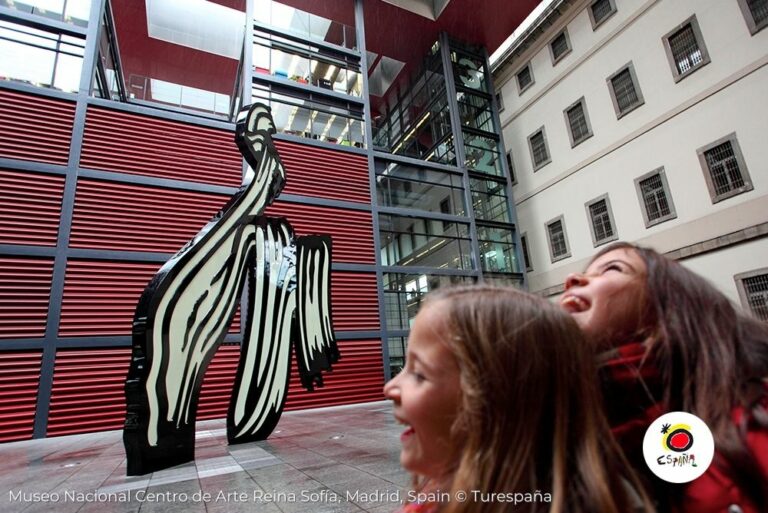
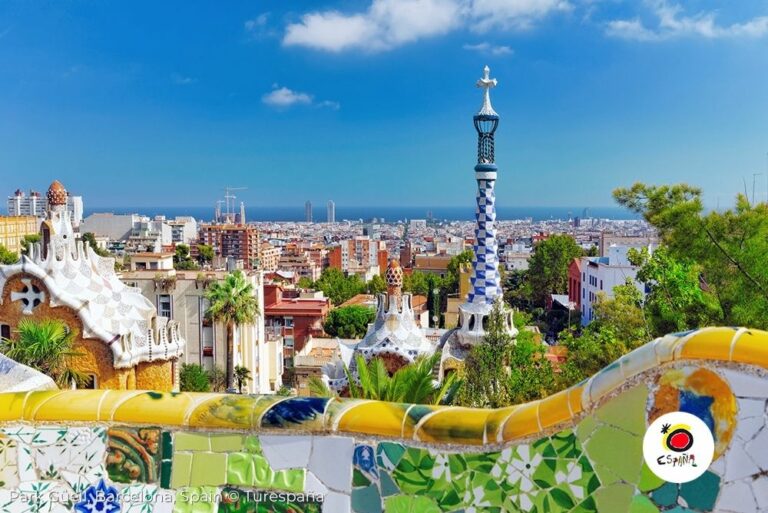

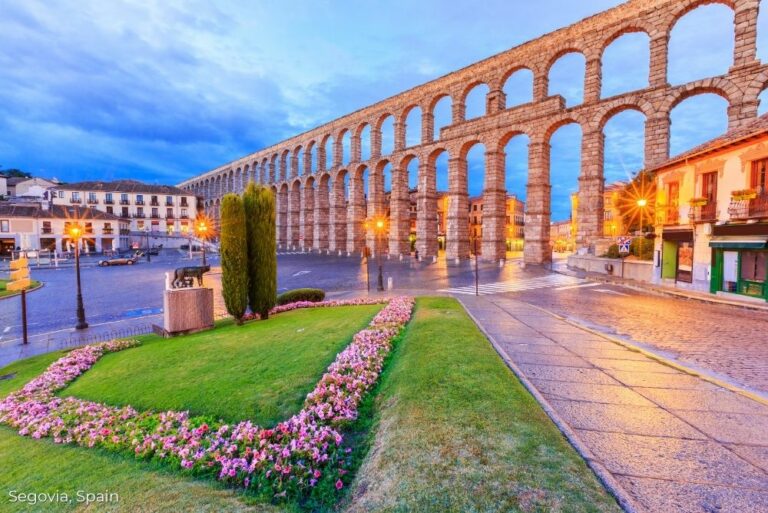

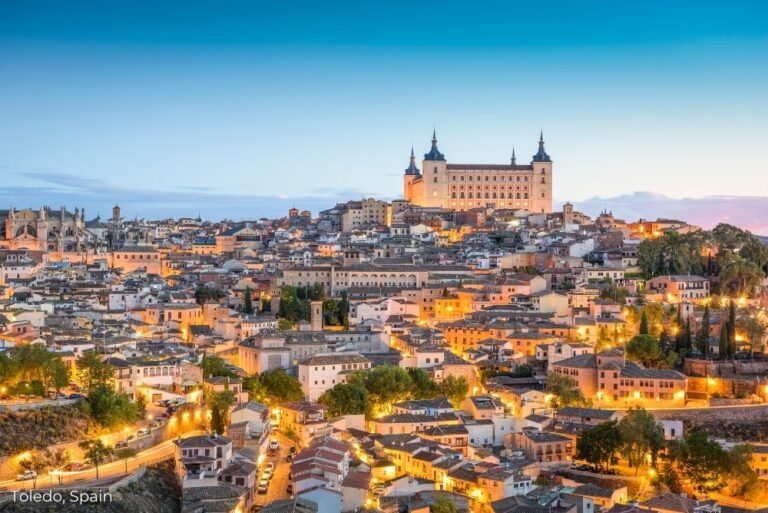

















This is a land of culture, history, fiestas, abundant nature, and excellent food. You’ll be able to visit everything from outstanding monuments to a wide variety of different natural landscapes… and you’ll have the chance to take part in several unique popular events and sample a range of delicious gastronomic products.
Interesting facts:
Surprising, diverse and full of contrasts – Spanish nature has a wonderful effect on you. Natural landscapes make you breathe in deeply and forget about your worries, leaving you to enjoy nothing but the moment. Mountains, volcanoes, wetlands, forests, rivers, valleys, cliffs, lakes… There are so many different environments in Spain to make you feel brand new. Unique and different natural spaces. Some of them, such as the Serra de Tramuntana Mountain range, the Teide National Park and the Pyrenees, are listed as UNESCO World Heritage Sites in the cultural landscape category. You have to see it to believe it.
Spain’s natural landscapes are protected in some truly incredible national parks which encompass the geological and ecological diversity of the country. For those who like to conquer high heights, the Ordesa and Monte Perdido national park should be at the top of your list. This park consists of four valleys (Añisclo, Escueta, Ordesa and Picuaín) and one peak, Monte Perdido with landscapes ranging from meadows, enormous forests, glaciers, perpetual snow, and so much more. Other mountainous standouts include Sierra Nevada National Park which has some of the highest peaks in continental Spain and Sierra de Guadarrama National Park, just an hour by car from Madrid.
There are a variety of aquatic national parks as well including Aigüestortes I Estany de Sant Maurici which features more than 200 streams, rivers and lakes, Las Tablas de Daimiel National Park which is one of Spain’s most unique landscapes and is excellent for bird watching with wooden walkways crossing its wetlands, and the Cabrera Maritime-Terrestrial National Park, an oasis whose untouched coastline hosts a unique species native to the Balearic Islands.
Finally, an outline of Spain’s unique landscapes wouldn’t be complete without mentioning the incredible Canary Islands which are known for their unusual geological formations and biodiversity. Aforementioned, Teide National Park on the island of Tenerife is a clear standout with Spain’s highest peak Teide volcano at a staggering 3,718 metres. This volcanic ecosystem has allowed unique flora and invertebrates to flourish. Likewise, Lanzarote’s Timanfaya National Park’s volcanic formations have also led to the emergence of unique wildlife, while Garajonay National Park on the island of La Gomera boasts jaw-dropping prehistoric forests.
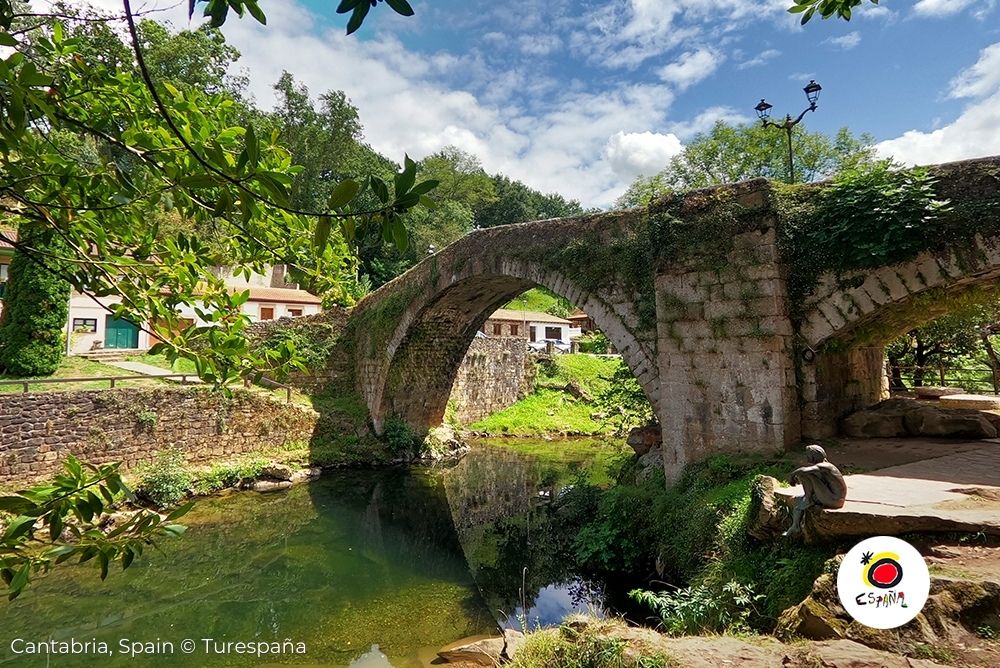

Spanish cuisine is famous the world over because it is flavoursome, healthy, traditional, creative and varied, and also because of its popular restaurants and fine dining, as demonstrated by the international recognition of its chefs. An example of how healthy it is can be seen in its famed Mediterranean diet. Star ingredients include olive oil, Iberian ham –a source of national pride– and Spanish wine, the perfect accompaniment for toasting. Rioja produces the most famous Spanish wine, but you will discover other options throughout your journey around Spain.
Of the 16,361 Michelin star-rated restaurants globally 1,227 are to be found in Spain. 13 of the 141 venues to achieve the coveted 3* rating can be found in the region and 39 of the 424 restaurants to be awarded the Green star rating – an annual award which highlights restaurants at the forefront of the industry when it comes to their sustainable practices. They hold themselves accountable for both their ethical and environmental standards and work with sustainable producers and suppliers to avoid waste and reduce or even remove the plastic and other non-recyclable materials from their supply chain.
Spanish cuisine is particularly celebrated around the country in a variety of traditional celebrations including Corpus Christi in Toledo, Easter Week in Cuenca, the Albacete Fair, and the Drum Festival in Hellín. A few standout highlights of regional Spanish cuisine include cured ham from Huelva and Córdoba, octopus “a feira” (with potatoes) and “queimada” (alcoholic spirits set alight in an earthenware bowl according to the typical ritual) from Galicia, and the incredible wineries which are found in Castilla la Mancha. Costa Brava is another key region for Spanish cuisine as it boasts 15 Michelin stars, including culinary temples like Celler de Can Roca.

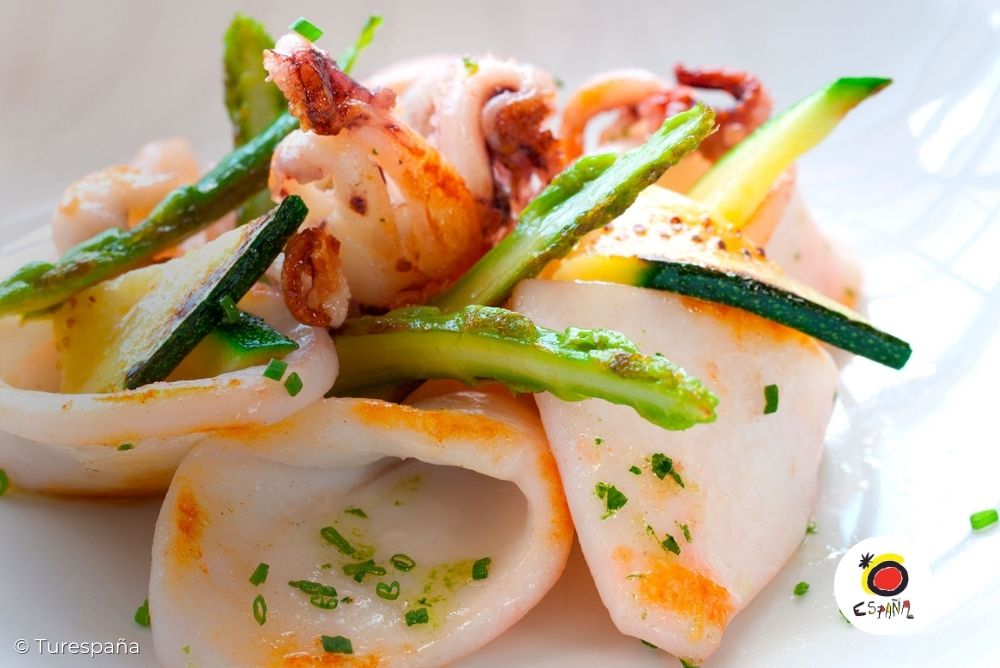
Discovering Spain means travelling back and forth in time and being surprised by a whole host of monuments ranging from an ancient Roman aqueduct to medieval castles and the most avant-garde, futuristic architecture. Centuries and mixed cultures have left their fascinating mark on Spain with some of the most amazing artistic heritage in the world. When you visit you will be enchanted with the stories behind every work of art and remember them forever. Of special note are the incredible whitewashed villages found in Andalusia whose iconic colour scapes are a testament to Southern Spain’s Moorish heritage. When it comes to visual art, Spain also has a lot to offer including beautiful masterpieces created by Velázquez, Picasso, Dalí and Gaudí. It is well worth discovering them with the original guided tours on offer, retracing the footsteps of great masters through museums such as the Prado, or visiting palaces like the Alhambra in Granada on a moonlit tour. Experiences that offer so much more than an average visit to a monument.
When it comes to tradition in many regions of Spain, annual processions are a mainstay in public calendars. These vibrant fun-filled occasions are accompanied by joyous music, visits to the shrines and graves of Catholic Saints, tasty local cuisine and so much more. Key festivals include the Bonfires of San Juan, the annual festival and pilgrimage of El Rocío, and the pilgrimage of Nosa Señora da Barca which has been declared a Festivity of National Interest.
Moreover, every February Spaniards celebrate Carnival nationwide which is marked by street parties and fancy-dress costumes. This is a time for fancy dress costumes and partying in the streets. The most popular Carnivals are in Santa Cruz de Tenerife (on the island of Tenerife in the Canary Islands), Cadiz (in Andalusia), Águilas (in the Murcia region) and Xinzo de Limia (in Ourense, Galicia). After Carnival, in late March or April, Holy Week, is one of the most traditional and deeply felt events on Spain’s calendar, filling the streets with passion, religious processions and the sound of drums. The Easter traditions in Andalusia, Aragon, Castilla y Leon, Castilla la Mancha, Cantabria, the Regions of Valencia and Murcia are especially well-known. Also popular are incredible jazz festivals including the International Jazz Festival in Madrid, the harvest festivals of Rioja, Jerez de la Frontera and Montilla, and special guided tours on All Saints Day.
For those who like to stay active, there are also numerous opportunities to go for runs including the 10k San Silvestre Vallecana through Madrid each year on the 31st of December which attracts 40,000 runners each year, and a midnight race through Andalusia held on the last Friday of September along the river Guadalquivir which provides plenty of opportunities to take in the regions stunning architecture further.


Spain boasts almost 8,000 kilometres of coastline where travellers can discover quaint little fishing villages or the grand seaside towns of the north. It is also home to pristine coves lapped with turquoise water nestled between forests, like the ones in the Balearic Islands, and unspoilt, volcanic beaches in the Canary Islands or the fine sand beaches of the Mediterranean. Wherever you are, you’ll be able to enjoy thousands of hours of sunshine every year. What’s not to love? Its beaches are famous for their quality and environmental respect. And enjoying the sea in Spain doesn’t just mean relaxing on a beach, but also setting sail and discovering spectacular places by boat, eating fresh fish next to the port, admiring the sunset behind a lighthouse or even spending the night aboard. It means disconnecting from the world and touching base with stunning nature.
Spain’s coastal areas are fantastic for keeping active and in shape with a huge number of water sports available including surfing, kayaking, water skiing and scuba diving. Charter boats can also be taken out onto the waters to explore the Spanish coastline in a whole new way, with stunning aquatic biodiversity to be discovered. Spain’s unique coastal landscapes include everything from pristine beaches with crystal clear waters, scattered tranquil coves with still pools, lush wetlands and marshes, cliffs over 60 million years old, and areas of Mediterranean forests and deserts. While on land there are few better feelings than strolling along an ocean promenade or marina in one of the many stunning seaside towns without a care in the world, before stopping off at a local seaside bar for a cocktail. You’ll find many regions have incredible nightlife and dining for those keen to experience a lively taste of local life, along with plenty of fun activities for the whole family including water parks and more.
Spanish coastal areas have also heavily influenced the artistic development of the nation with the birthplace of legendary Surrealist artist Salvador Dali in Figueres and the modernist architect Gaudí in Reus on the coast, with fascinating centres, museums and galleries dedicated to these and many other prominent local artists. Spanish coastal towns also have clear architectural and artistic influences which are separate from the interior which makes them picturesque works of art of their own to be explored at your leisure. After a day of inspiration make sure to take the time to take in a gorgeous sunset while sitting on the beach!

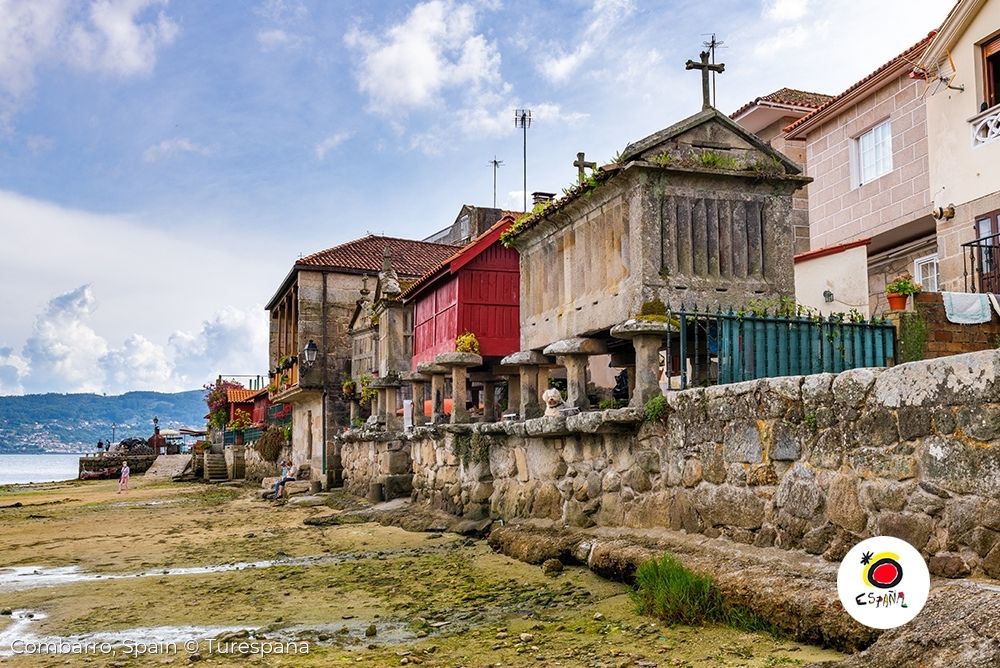
One way to discover the culture of Andalusia is by exploring the sites which have been awarded the UNESCO World Heritage designation. In Granada, you’ll see the Alhambra palace, the Generalife gardens and the mediaeval Albaicín neighbourhood; in Córdoba, its historic centre with the great Mosque; in Seville, the cathedral, the Alcázar palace and the Indies Archive; and in Jaén, the monumental sites of Úbeda and Baeza. You’ll also be able to experience festivals such as Easter Week, the Carnival in Cadiz, the Rocío pilgrimage in Huelva and the April Fair in Seville.
You’ll find a variety of natural landscapes which range from the beaches of the Costa del Sol, Costa de la Luz and Almería to the extensive olive groves of Jaén. You can visit the Doñana National Park (a World Heritage Site), or go skiing in the Sierra Nevada ski resort.
Visit these lands which saw the birth of the renowned painter Francisco de Goya, where enticements include skiing in its famous ski resorts and sampling the typical gastronomy of this region.
If you’re a culture lover, you’ll be able to visit monasteries, castles, the various examples of Mudejar architecture with UNESCO World Heritage designation, and monuments such as the Basilica of Nuestra Señora del Pilar. What’s more, this area of Spain also lies on the famous pilgrim route known as the Way of Saint James.
Its natural attractions include such spectacular places as the Ordesa y Monte Perdido National Park (ideal for adventure sports in the open air) and the Pyrenean area, the perfect place for skiing in first-rate ski resorts such as Candanchú and Formigal.
These islands are known for being the sunshine centre of Europe and offer mild temperatures and a range of outstanding natural attractions. In fact, five of its seven islands have been declared a Biosphere Reserve, and the archipelago has four national parks.
Its beaches are its most outstanding attractions and are perfect for relaxing in the sun or enjoying water sports such as windsurfing and scuba diving. In the interior you’ll find amazing landscapes which are ideal for hiking, cycle touring, rock climbing and even caving.
Some of the most spectacular include the volcanic scenery of Lanzarote, the beaches of Fuerteventura and Gran Canaria with their sand dunes, or the green forests of La Palma and La Gomera. The Canary Islands also offer a range of cultural options to explore, including the monumental site at San Cristóbal de La Laguna, which has been awarded World Heritage designation by UNESCO, and the work of César Manrique in Lanzarote. If you’re going in February you’ll also be able to enjoy the spectacular Carnival in Santa Cruz de Tenerife.
If you’re thinking of planning a getaway to Cantabria in what is known as Green Spain, you can look forward to a trip full of beautiful scenery, excellent gastronomy and unique heritage.
This northern part of Spain is home to various prehistoric caves, of which the most famous of all is Altamira, awarded a World Heritage designation and known as the “Sistine Chapel of Prehistoric Art”. Cantabria also lies on the famous Way of Saint James pilgrim route, and its towns and villages contain a wealth of beautiful monuments such as the Magdalena Palace in Santander, the monastery of Santo Toribio de Liébana or Gaudí’s “Capricho” monument in Comillas.
You’ll also marvel at the spectacular landscapes, as the coast of Cantabria offers over 60 beaches with fine white sand in holiday resorts such as Laredo and San Vicente de la Barquera. And further inland, as well as its various nature reserves, nobody should miss a visit to the Picos de Europa National Park, the ideal place for adventure sports.
This is a land famous for its arts and crafts, for the unique monuments to be seen in its towns and cities, and for being the setting for the adventures of the famous literary hero Don Quixote of La Mancha.
Any trip to this area in inland Spain should definitely include a visit to its World Heritage cities such as Cuenca with its famous Hanging Houses, and Toledo with its cathedral and Alcázar fortress. If you like culture and history, you’re bound to enjoy its four Archaeological Parks, some of the oldest examples of rock art in Spain, and events such as the International Classical Theatre Festival in Almagro.
And if you opt to explore its natural landscapes, you should bear in mind that Castilla la Mancha has the largest number of officially designated nature reserves, nature areas and national parks in Europe, including the Tablas de Daimiel and Cabañeros. You’ll love them both.
This is one of the destinations which offers the greatest diversity of natural landscapes in Europe, as well as spectacular monuments, and a varied and abundant gastronomy. All this guarantees that this region in the interior of Spain is bound to delight you.
It has a whole host of places which are well worth visiting, including towns like Avila, Salamanca and Segovia (all three are World Heritage Cities) and unique attractions such as Burgos Cathedral and the Atapuerca archaeological site, which contains traces of the first settlers in Europe. The famous Way of Saint James also runs through the Castilla León region and is one of the world’s most important pilgrim routes.
If you feel like treating yourself to some truly spectacular scenery you can choose from any of the nearly 40 protected natural spaces such as the Picos de Europa National Park, where you’ll see some of Spain’s finest Atlantic forests. All these areas are perfect for climbing, cycle touring and kayaking. For a relaxing walk, why not try Las Médulas, the largest open-air golden mine excavated during the period of the Roman Empire?
The spectacular beaches in areas such as the Costa Brava, its world-class gastronomy, and the works of famous artists such as Gaudí and Dalí all make this region one of Spain’s most popular destinations.
In Catalonia, you will find so many interesting cultural landmarks you won’t know where to begin: unique buildings in Barcelona (known as “the capital of Modernism”) such as the Sagrada Familia Cathedral or the Palau de la Música Catalana Auditorium, the outstanding archaeological site at Tarraco, the monastery of Poblet in Tarragona, the churches of the Boí valley in Lleida… all declared World Heritage sites by UNESCO.
What’s more, you can opt to enjoy a whole range of events thanks to the programme of world-class museums like the National Art Museum of Catalonia and the Dalí Theatre-Museum in Figueres. Visitors to this area in northeast Spain should also make a point of stopping off at the spectacular beaches of the Costa Dorada, Costa Barcelona and Costa Brava, with such internationally renowned resorts as Salou, Sitges, Tossa de Mar, Cadaqués, Lloret de Mar and Roses. Catalonia also has numerous marine resorts which are ideal for indulging in a whole range of water activities. And if you love mountain scenery, what could be better than an excursion to the Catalan Pyrenees (featuring ski resorts which are tailor-made for snow tourism) or to the National Park of Aigüestortes y Estany de Sant Maurici?
An open city which links two continents and in which four different cultures come together and intermingle: Christian, Muslim, Hindu and Jewish.
Sites not to miss include the Royal Walls and the Mediterranean Maritime Park. And if you’re keen on water sports, you’ll really enjoy Ceuta’s coast. You’ll be able to paddle in a kayak, visit the city in a recreational vehicle and spot turtles, dolphins and whales – all in one trip! But this coastline is a particular favourite with scuba divers, as this is the place where the waters of the Atlantic Ocean and the Mediterranean Sea meet and mingle together, thus encouraging a constant regeneration of its flora and fauna.
Madrid is synonymous with culture and street life. The capital city is home to some of the most frequently visited museums in Spain, and its surroundings offer the chance to visit several outstanding sites.
The city of Madrid is open and welcoming, modern yet traditional, stately yet popular, lively yet peaceful… but more than anything else it is a cultural paradise. It is home to what is known as the Triangle of Art, which contains within a limited area the Prado Museum, the Reina Sofía Art Centre and the Thyssen-Bornesmiza Museum.
You’ll also be able to visit such impressive monuments as the Royal Palace, places with their own particular charm like the Plaza Mayor square or the grand avenue known as the Gran Vía, or enjoy what is considered by some to be possibly the most exciting nightlife in Spain… as well as wander in large green spaces such as the Retiro Park, and drop into bars and taverns to sample a range of delicious tapas. But you’ll find the Madrid Region offers much, much more. For example, the cities of Aranjuez, Alcalá de Henares and San Lorenzo del Escorial, all of which have been declared World Heritage Sites. Or small, picturesque towns such as Chinchón, and the charming villages in the mountains.
Routes create history and foster traditions, and in the Kingdom of Navarre, the most important is the St James Way, which has left an indelible mark on the customs and heritage of the region. Other routes with centuries of tradition are the Roman roads and the cattle tracks; Navarre also boasts a multitude of long and short hiking paths.
Witness the steep, green silhouette of the Pyrenees and see how it undulates and softens as you approach La Ribera Breathe in the aroma of tradition on the St James’ Way route, from the legendary Roncesvalles to the town of Viana. Savour the colours of the festival: white and red predominate in the festival of San Fermin and the summer celebrations. Don’t miss the view enjoying delicious cuisine with exquisite meats and sumptuous vegetables from La Ribera, accompanied by the region’s excellent wines.
The Region of Valencia has a total area of 23,255 km2 and a profoundly Mediterranean landscape with vast coastal plains alternating with striking mountainous areas, in addition to 632 km of coastline – so visitors can enjoy the sea and the good climate all year round.
It has a population of over 5,000,000 inhabitants and boasts an age-old culture which includes the celebration of numerous popular fiestas in all its towns and villages, major tourist resorts along its coastline, and several large cities –foremost of which is Valencia– with a full range of services, as well as sleepy villages in the interior.
From north to south, the Region of Valencia comprises the provinces of Castellón, Valencia and Alicante. These are known and promoted in the tourist industry by their four larger designations: Costa Blanca, Benidorm, València Terra i Mar and Castellón Costa Azahar.
A region of contrasts where you’ll be able to visit exceptionally incredible historical sites, enjoy a whole host of natural landscapes, and sample one of Spain’s most highly-prized cured hams.
Extremadura has three sites which have UNESCO World Heritage designation. In Mérida, its capital, visitors should not miss exploring its archaeological site, which every summer is used as the venue for a major theatre festival. The historic quarter of the city of Cáceres is also well worth a visit, as is the Royal Monastery of Santa María de Guadalupe in the surrounding area.
Another of Extremadura’s attractions is its spectacular scenery, always a particular favourite with birdwatchers. Highlights include the Monfragüe National Park, the Jerte valley and the region’s characteristic wooded pastures. A visit to the Jerte valley is highly recommended in spring when the cherry trees are in blossom and the valleys are clothed in a blanket of white.
Its capital, Santiago de Compostela is the final destination on the Way of Saint James, the famous pilgrim route. For this reason alone it is worth visiting this region in Green Spain.
You’ll love its landscapes full of green wooded valleys, and its amazing beaches. All along the length of its coastline, bathed by the Cantabrian Sea and the Atlantic Ocean, you’ll find areas of spectacular cliffs like those on A Costa da Morte, or the incredible Islas Atlánticas National Park.
You can visit its numerous charming villages, both on the coast and inland, and cities such as Santiago de Compostela, A Coruña, Ferrol, Lugo, Orense, Pontevedra and Vigo. You’ll marvel at its many monuments such as the Tower of Hercules or Lugo’s city walls, both designated World Heritage sites by UNESCO. If you feel like relaxing, why not make the most of Galicia’s reputation as a land of spas and open-air hot springs? And if you fancy a little sport, you can always go to any of its golf courses, or marine resorts… there’s a whole world of options to choose from.
This is one of the most popular destinations in the western Mediterranean, and you’ll soon find out why. You’ll find enchanting coves, gorgeous sunsets and lush natural landscapes. There are many ways to enjoy the islands: relaxing in an atmosphere of well-deserved peace and quiet, or partying until all hours as you enjoy the islands’ wild nightlife.
These are places where you wander through the streets of fishing villages, discover outstanding natural landscapes or enjoy a range of water sports. Minorca and Formentera, two small corners of paradise in the Mediterranean, are absolute havens of tranquillity.
Majorca and Ibiza are the two largest islands. The main attractions in Majorca include its capital, Palma, the Cabrera National Park and the mountains of the Sierra de Tramontana. Ibiza, meanwhile, has been declared a World Heritage site by UNESCO for its rich biodiversity and cultural attractions, which include the Phoenician archaeological site of Sa Caleta, the necropolis of Puig des Molins and the historic centre of Eivissa. What’s more, the island of Ibiza is known to party-goers all over the world for its exhilarating nightlife, where the beat of the music can be heard all night long.
Of course, everyone knows the wines from La Rioja. This area of Spain has over 500 wineries and is internationally famous for the quality of its wines. As well as wine tasting, a visit to this region also offers a range of activities which take place in and around the extensive vineyards, including horse-riding, hot-air ballooning, and thrilling 4×4 routes.
This region is also closely linked to the famous Way of Saint James pilgrim route and has a whole host of cultural attractions. Apart from its capital, Logroño, you’ll be able to explore other places such as Santo Domingo de la Calzada and its cathedral, San Millán de la Cogolla, site of the Suso and Yuso monasteries, declared World Heritage Sites by UNESCO, and known for being the birthplace of the first written words in the Spanish language.
Culture and wine together make an unbeatable combination. And add to that some amazing natural attractions; in La Rioja you’ll find Mediterranean forests, high-mountain areas, and lunar landscapes! Make sure to visit the not to be missed Sierra de Cebollera Nature Reserve and the Arnedillo Biosphere Reserves to complete your trip.
The city of Melilla is an open destination which links two continents and in which four different cultures come together and intermingle: Christian, Muslim, Hindu and Jewish. A good way to understand this is by following the Route of the Temples, which takes a tour of the holy places of each of these religions.
Another attraction is its Modernist architecture. In fact, after Barcelona, this is the city in Spain with the most Art Déco and Modernist buildings –about 900. Another highlight is the Ciudadela citadel, an outstanding example of the evolution of military architecture between the 15th and 18th centuries.
And finally, Melilla is the perfect destination for sports enthusiasts. Attractions in the surrounding area include a visit to Mount Gurugú with its resident colony of monkeys, and water sports lovers will be able to have fun with water bikes, as well as scuba-diving on its rocky sea bed, with its abundance of marine life.
This region boasts some of the best cuisine in the world, beaches in natural surroundings, and stunning examples of avant-garde architecture. This area of northern Spain is perfect for an all-around trip. If you go to the Basque Country, don’t forget to try their famous “pintxos”: haute cuisine in miniature which you will find on display in many bars. You’ll also find several restaurants run by some of the standard-bearers of the new Spanish cuisine. And if you’d like something delicious to drink, why not try any of the wines from the Rioja Alavesa region?
Also worth a special mention are its beautiful coastal destinations with such well-known places as San Sebastián, Zarautz and Getxo, as well as inland cities such as Vitoria and Bilbao. This last location is home to such innovative buildings as its Guggenheim Museum, which has received international acclaim. Don’t miss it, or the spectacular Vizcaya suspension bridge, a UNESCO World Heritage site. What’s more, if you’re a culture lover, there is an event on the calendar not to be missed: the famous San Sebastián International Film Festival which is held in the Palacio Kursaal. Moreover, Basque Country has a range of spectacular natural resources (both nature reserves and biosphere reserves) which make this the perfect place for sports, and offer yet another good reason to set out on the popular Way of Saint James pilgrim route which passes through this part of Spain.
This region in Northern Spain invites you to reconnect with nature and dedicate some well-deserved time to yourself to practice self care. Asturias is a good place for doing this at a gentle pace, with delicious food and all stunning natural landscapes within your reach. There is a reason that it is so well-known as a natural paradise. Asturias is, in essence, the perfect place for nature and wellbeing. On a trip in the area you can eat well, rest and go with the flow in the rural interior of the region, enjoy the life of its cities and the quaint charm of its seaside towns.
Asturias is home to various World Heritage sites which you can visit; the pre-Romanesque churches on the outskirts of Oviedo, the stretches of the St James Way that pass through the region, various prehistoric caves with cave paintings, the Holy Chamber of the Cathedral of Oviedo and the fountain of the Foncalada (these last two landmarks are in Oviedo). The three main cities in the region are Oviedo, Gijón and Avilés. The first of these was the setting of one of Woody Allen’s films and the inspiration for writers such as Clarín. A stroll through its old town reveals, for example, the Teatro Campoamor, home of the prestigious Príncipe de Asturias Awards ceremony. Gijón is a city by the sea, with a wonderful seaside promenade alongside its urban beach, an old fishing neighbourhood with spectacular views and the modern Laboral Ciudad de la Cultura, a cultural centre that has revitalised the old university. For its part, Avilés boasts one of the best-preserved old towns in Asturias and the modern Niemeyer Centre, the latest creation in Europe from the architect Oscar Niemeyer.
The region boasts examples of unique Pre-Romanesque art; and its cities have reinvented themselves through their culture and architecture, leaving behind their more industrial past.
This region boasts over 3,000 hours of sunshine a year, and its coastline is bathed by the warm waters of two seas. In fact, its coast is known as the Costa Cálida (the balmy coast) and is home to endless beaches and small coves which offer multiple options for leisure, sports and well-being.
One of the most attractive areas is La Manga del Mar Menor, the ideal destination for relaxing and enjoying the sea and the activities in its marine resort. You’ll also find long white sandy beaches such as those of San Pedro del Pinatar; unspoilt coves such as the ones in Cartagena, curious landscapes such as the rock erosions of Mazarrón, or fishing towns such as Águilas.
The region is also known for its wide range of wellness and beauty centres. Many of its beaches are considered open-air spas, due to the hyper-saline waters of the Mar Menor, and its therapeutic mud. The region is also boasts several major spa resorts.
Spain is a country with a growing level of awareness towards environmental protection. The concern for searching for a sustainable development model, which is compatible with its economic activity and rational use of resources with environmental conservation, materialised into the Strategic Sustainable Development Strategy for Spain, approved in 2007. Spain also maintains an active attitude towards global environmental protection, subscribing to numerous agreements for the global protection of nature and protocols to combat climate change and pollution. In this regard, a noteworthy aspect is Spain’s commitment to the Sustainable Development Goals (SDGs) of the 2030 Agenda for Sustainable Development approved by the UN in 2015, which incorporates aspects directly related with the conservation of ecosystems and biodiversity, reducing pollution, defending the environment and the fight against climate change.
Environmentally friendly tourism is everyone’s responsibility and is a commitment for more and more destinations in Spain. It is the reason why many of Spain’s natural spaces are accredited by the European Charter for Sustainable Tourism (ECST). In these natural areas, you will find businesses combining tourism with a commitment to environmental protection. You can enjoy some of the natural spaces in Europe that are the most treasured for their natural heritage (including National Parks and Biosphere Reserves) and you will get the most out of your visit while you contribute to preserving the ecological and landscape values of each destination.
The Ebro Delta has been designated a European Destination of Excellence (EDEN) by the European Commission in recognition of its proposal for sustainable tourism. This nature space located in Tarragona covers an area of 320 square kilometres, of which 80 comprise the Ebro Delta nature reserve. It has a great ornithological richness and is internationally important due to the presence here of over 400 species and some of the most important breeding colonies in the Mediterranean.
These flat lands give the Ebro Delta its unique landscape, which varies according to the season of the year. It is home to everything from market gardens and orchards to rice fields, while in the coastal area there are large lakes fringed by rush and reed beds. The area around this nature reserve is characterised by its saline soils, and extensive deserted sandy beaches with dune systems.
Río Eo, Osco y Terras de Burón Biosphere Reserve – This protected nature area is divided between the Regions of Galicia and Asturias , and was designated Biosphere Reserve by UNESCO in June 2007. This recognition takes into account the biodiversity of the Eo River and its estuary, a large part of the Navia, Porcía and Miño river basins, and major coastal basins running onto the Cantabrian Sea. The Río Eo, Oscos y Terras de Burón Reserve is in north-western Spain and includes 14 municipal districts. In the Galicia part, the reserve includes Ribadeo , Trabada, A Pontenova, Ribeira de Piquín, Baleira, A Fonsagrada and Negueira de Muñiz. In the Region of Asturias, it covers the villages of Castropol, Vegadeo, San Tirso de Abres, Taramundi , Villanueva de Oscos, Santa Eulalia de Oscos and San Martín de Oscos. It has a total of almost 160,000 hectares of protected countryside, with three special bird protection areas (ZEPAs), nine community interest areas (LICs), and one Wetland of International Importance (RAMSAR Convention) – the Eo river estuary.
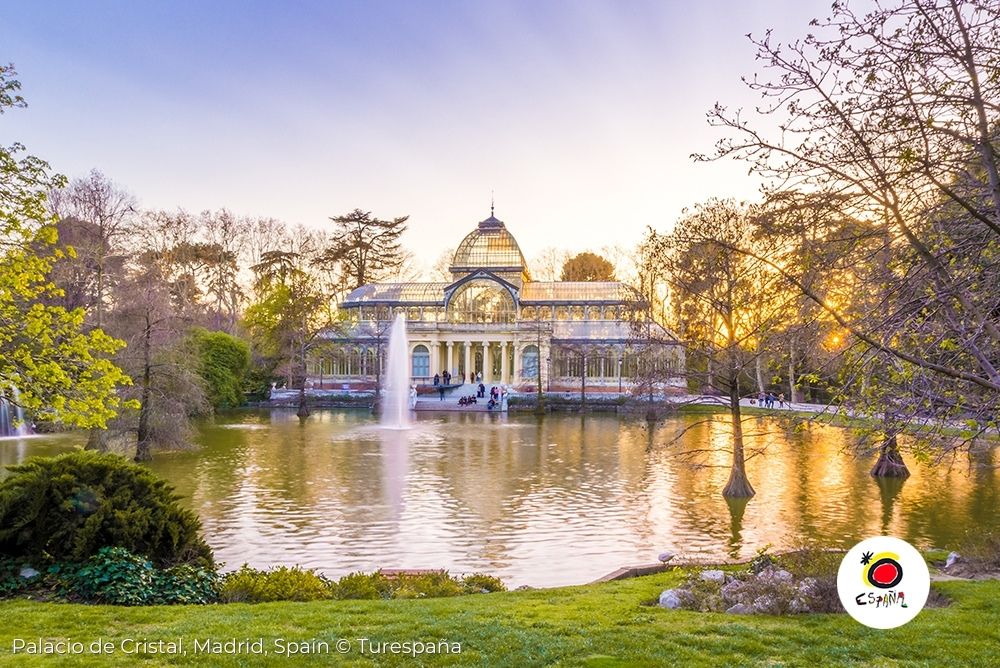
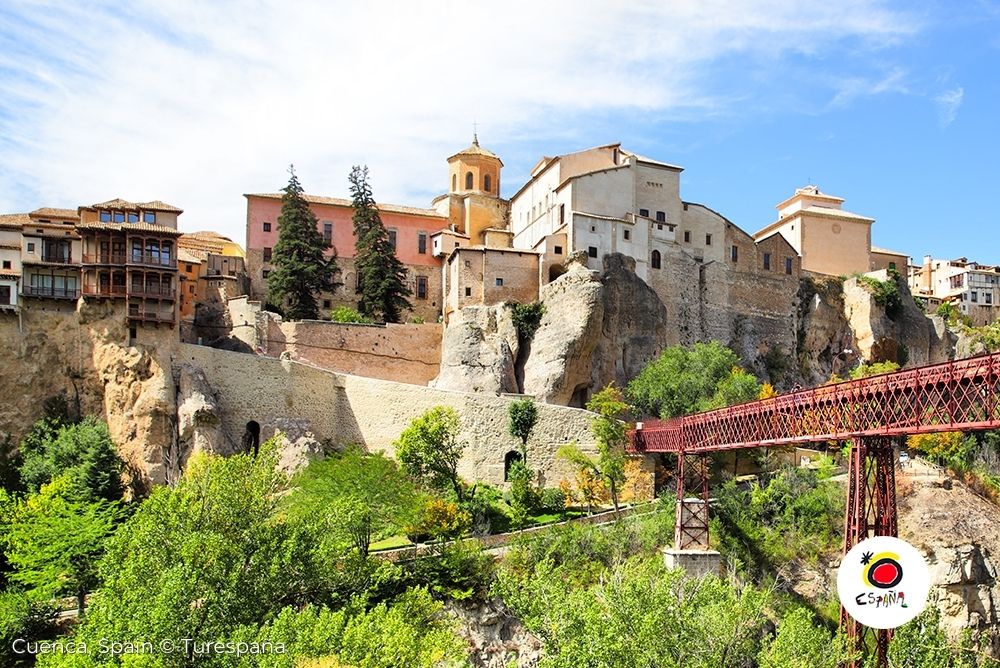
Would you like to travel comfortably by train between Madrid and Valencia in just 100 minutes? And between Madrid and Barcelona in two and a half hours? You can do so thanks to Spain’s extensive network of high-speed trains (AVE). When you opt to take these trains, you’ll be eligible for discounts on cultural visits, and you’ll also be able to see some of the country’s most important tourist destinations in record time. Visitors are highly recommended to make the most of this service. If you like this style of travel, you’re sure to be interested in the various destinations on the high-speed train network: a mode of transport that is fast, safe and sustainable, and in which the journey itself becomes part of a unique experience. The timetables are extremely flexible, so you’ll be able to set your own pace and design a custom trip to fascinating cities including Albacete, Alicante, Barcelona, Córdoba, Cuenca, Granada, León, Lleida, Madrid, Malaga, Ourense, Palencia, Puertollano, Segovia, Seville, Tarragona, Toledo, Valencia, Valladolid, Zaragoza, and many more. You’ll be able to explore at length a vast heritage featuring all the historic, cultural, culinary and leisure attractions of a country that is guaranteed to capture your heart.
Hosted by Bec Miles, editor of Charitable Traveller Magazine, Charitable Travel’s Travel Insider Podcast lets you in on Travel’s best-kept secrets, hidden gems, and unforgettable experiences. In this episode, Bec speaks to Ester Rojo and Pedro Medina from the Spanish Tourist Office about ways to get off the beaten track, and Spain’s ongoing sustainabile practises.
If you enjoyed this episode, click the links below to rate, follow, subscribe and join us as we visit other destinations!
Feeling inspired? Book your next Spanish adventure today! Our team of travel experts can help you plan the trip of a lifetime, and their inside knowledge will ensure you get the very best deal.



Fundraising Futures Community Interest Company, Contingent Works, Broadway Buildings,
Elmfield Road, Bromley, Kent,
BR1 1LW. England
Putting our profit to work supporting the work of charitable causes











For the latest travel advice, including security, local laws and passports, visit the Foreign & Commonwealth Office website.
© 2024 All rights reserved
Made with 
| Cookie | Duration | Description |
|---|---|---|
| AWSELB | session | Associated with Amazon Web Services and created by Elastic Load Balancing, AWSELB cookie is used to manage sticky sessions across production servers. |
| cookielawinfo-checkbox-advertisement | 1 year | Set by the GDPR Cookie Consent plugin, this cookie is used to record the user consent for the cookies in the "Advertisement" category . |
| cookielawinfo-checkbox-analytics | 11 months | This cookie is set by GDPR Cookie Consent plugin. The cookie is used to store the user consent for the cookies in the category "Analytics". |
| cookielawinfo-checkbox-functional | 11 months | The cookie is set by GDPR cookie consent to record the user consent for the cookies in the category "Functional". |
| cookielawinfo-checkbox-necessary | 11 months | This cookie is set by GDPR Cookie Consent plugin. The cookies is used to store the user consent for the cookies in the category "Necessary". |
| cookielawinfo-checkbox-others | 11 months | This cookie is set by GDPR Cookie Consent plugin. The cookie is used to store the user consent for the cookies in the category "Other. |
| cookielawinfo-checkbox-performance | 11 months | This cookie is set by GDPR Cookie Consent plugin. The cookie is used to store the user consent for the cookies in the category "Performance". |
| elementor | never | This cookie is used by the website's WordPress theme. It allows the website owner to implement or change the website's content in real-time. |
| JSESSIONID | session | Used by sites written in JSP. General purpose platform session cookies that are used to maintain users' state across page requests. |
| viewed_cookie_policy | 11 months | The cookie is set by the GDPR Cookie Consent plugin and is used to store whether or not user has consented to the use of cookies. It does not store any personal data. |
| Cookie | Duration | Description |
|---|---|---|
| __lc_cid | 2 years | This is an essential cookie for the website live chat box to function properly. |
| __lc_cst | 2 years | This cookie is used for the website live chat box to function properly. |
| __oauth_redirect_detector | past | This cookie is used to recognize the visitors using live chat at different times inorder to optimize the chat-box functionality. |
| aka_debug | session | Vimeo sets this cookie which is essential for the website to play video functionality. |
| player | 1 year | Vimeo uses this cookie to save the user's preferences when playing embedded videos from Vimeo. |
| Cookie | Duration | Description |
|---|---|---|
| AWSELBCORS | 6 minutes | This cookie is used by Elastic Load Balancing from Amazon Web Services to effectively balance load on the servers. |
| Cookie | Duration | Description |
|---|---|---|
| _ga | 2 years | The _ga cookie, installed by Google Analytics, calculates visitor, session and campaign data and also keeps track of site usage for the site's analytics report. The cookie stores information anonymously and assigns a randomly generated number to recognize unique visitors. |
| _gat_gtag_UA_164521185_1 | 1 minute | This cookie is set by Google and is used to distinguish users. |
| _gid | 1 day | Installed by Google Analytics, _gid cookie stores information on how visitors use a website, while also creating an analytics report of the website's performance. Some of the data that are collected include the number of visitors, their source, and the pages they visit anonymously. |
| _hjAbsoluteSessionInProgress | 30 minutes | No description available. |
| _hjFirstSeen | 30 minutes | This is set by Hotjar to identify a new user’s first session. It stores a true/false value, indicating whether this was the first time Hotjar saw this user. It is used by Recording filters to identify new user sessions. |
| _hjid | 1 year | This is a Hotjar cookie that is set when the customer first lands on a page using the Hotjar script. |
| _hjIncludedInPageviewSample | 2 minutes | No description available. |
| CONSENT | 16 years 3 months 16 days 17 hours 23 minutes | These cookies are set via embedded youtube-videos. They register anonymous statistical data on for example how many times the video is displayed and what settings are used for playback.No sensitive data is collected unless you log in to your google account, in that case your choices are linked with your account, for example if you click “like” on a video. |
| iutk | 5 months 27 days | This cookie is used by Issuu analytic system. The cookies is used to gather information regarding visitor activity on Issuu products. |
| vuid | 2 years | Vimeo installs this cookie to collect tracking information by setting a unique ID to embed videos to the website. |
| Cookie | Duration | Description |
|---|---|---|
| IDE | 1 year 24 days | Google DoubleClick IDE cookies are used to store information about how the user uses the website to present them with relevant ads and according to the user profile. |
| mc | 1 year 1 month | Quantserve sets the mc cookie to anonymously track user behaviour on the website. |
| NID | 6 months | NID cookie, set by Google, is used for advertising purposes; to limit the number of times the user sees an ad, to mute unwanted ads, and to measure the effectiveness of ads. |
| test_cookie | 15 minutes | The test_cookie is set by doubleclick.net and is used to determine if the user's browser supports cookies. |
| VISITOR_INFO1_LIVE | 5 months 27 days | A cookie set by YouTube to measure bandwidth that determines whether the user gets the new or old player interface. |
| YSC | session | YSC cookie is set by Youtube and is used to track the views of embedded videos on Youtube pages. |